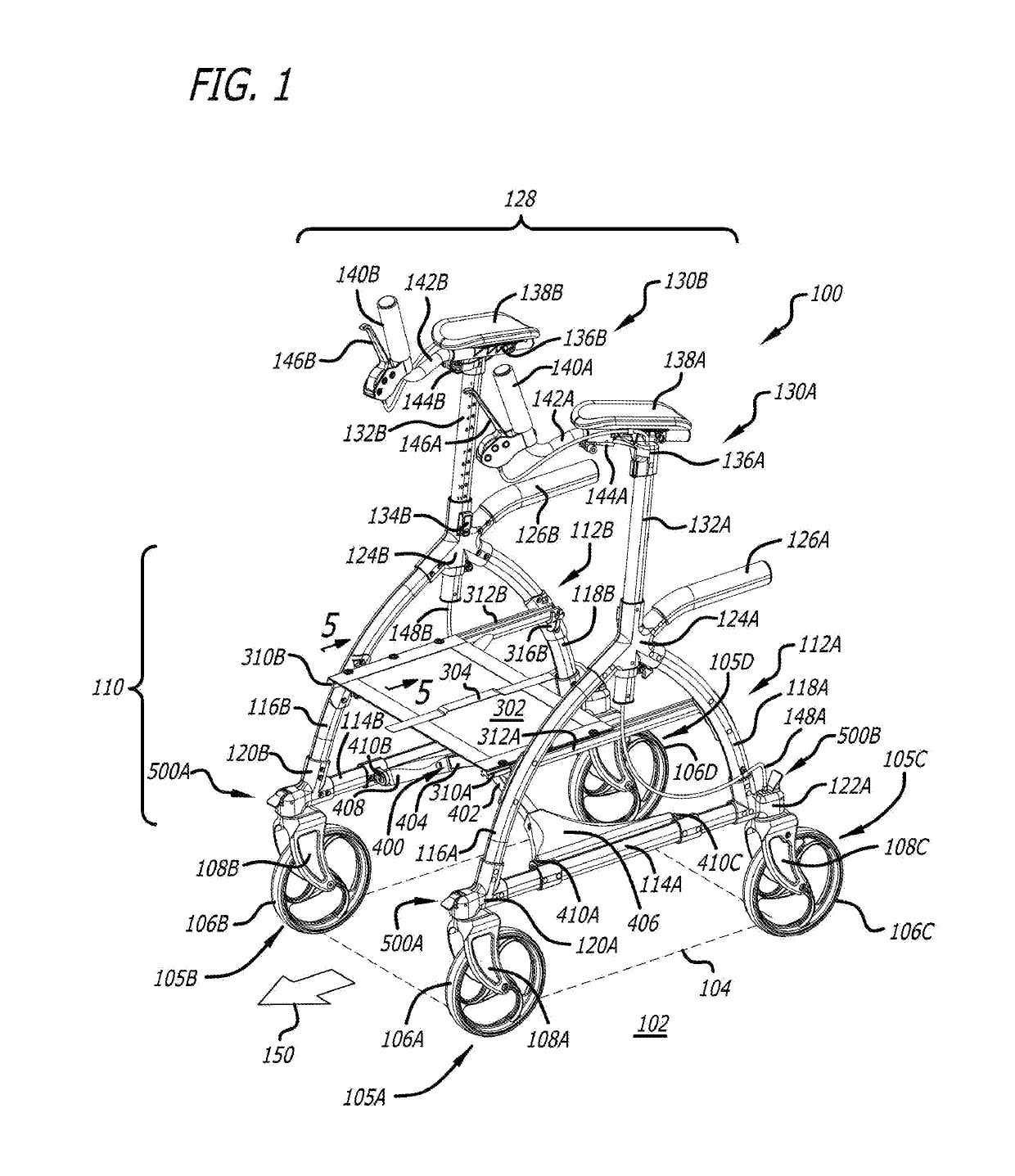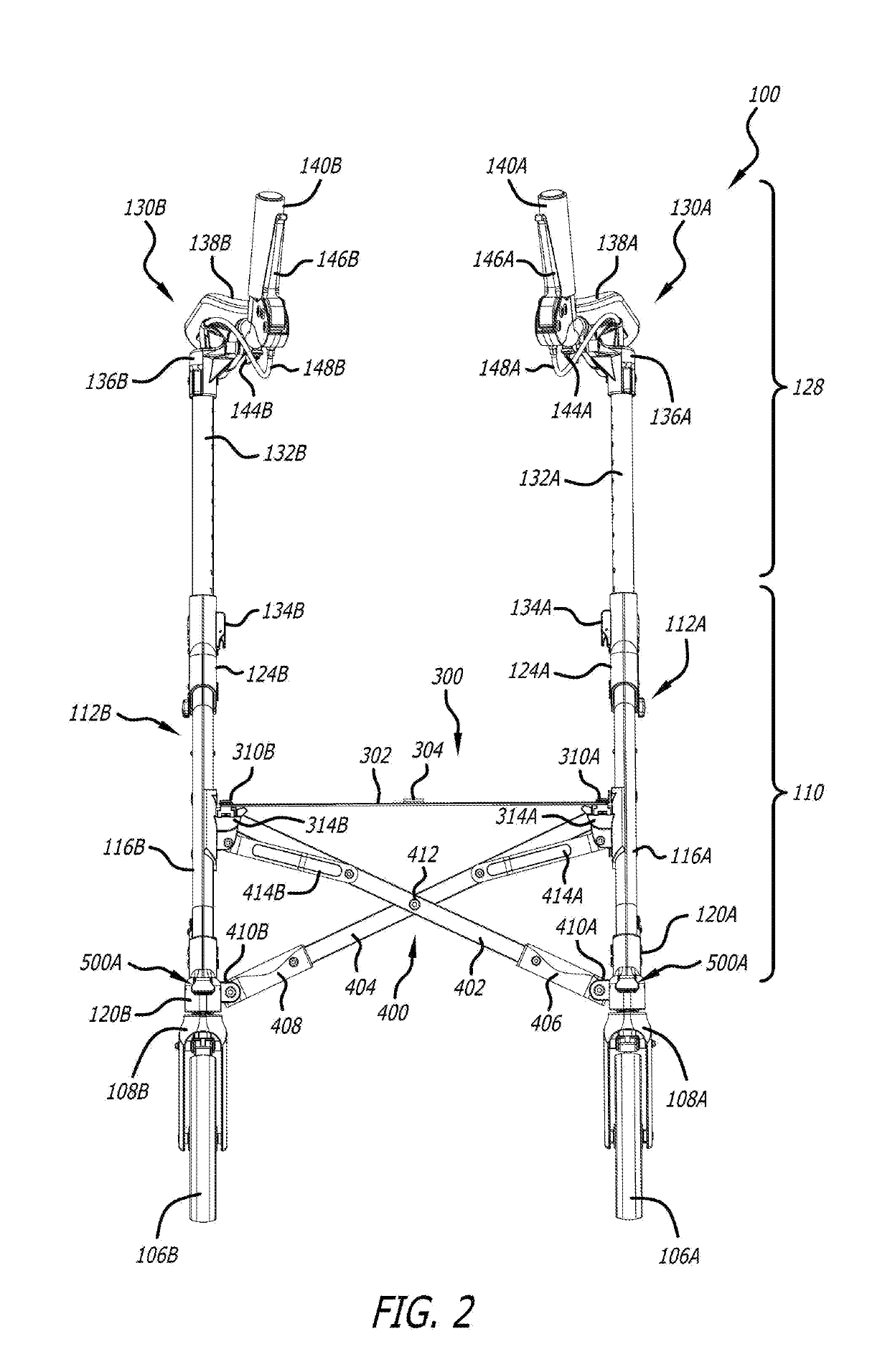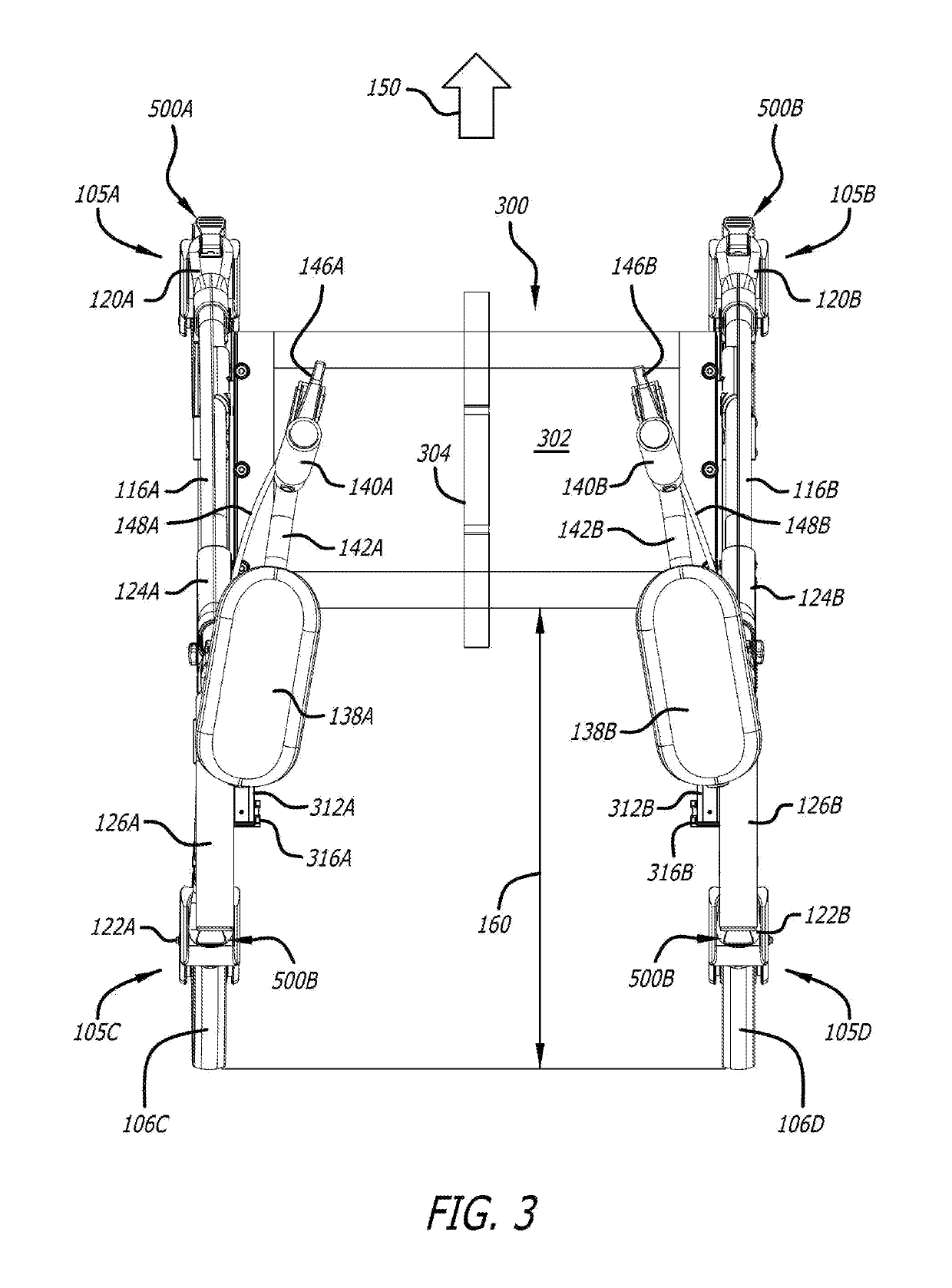Wheeled walker wheel direction lock apparatus and method
a wheeled walker and wheel lock technology, applied in walking aids, physical therapy, chiropractic devices, etc., can solve the problems of increased risk of tipping forward, unhealthy walking posture, and device not providing such a seat, so as to facilitate unassisted handling, facilitate ample walking space, and facilitate maneuvering in small areas
- Summary
- Abstract
- Description
- Claims
- Application Information
AI Technical Summary
Benefits of technology
Problems solved by technology
Method used
Image
Examples
Embodiment Construction
[0045]FIG. 1 shows an embodiment of a wheeled walker (or rollator) apparatus 100 in the open state on a walking surface 102 ready to receive a user 700 (FIG. 16) to operate and move along moving direction 150. Wheeled walker apparatus 100 has a frame 110 supported on walking surface 102 by four wheel assemblies 105A-D. Frame 110 includes a left side frame 112A and a right side frame 112B, each having three side frame tubes, including a respective frame horizontal tube 114A-B, a respective frame front tube 116A-B, and a respective frame rear tube 118A-B. The three side frame tubes of each side frame 112A-B form an approximately triangular shaped frame, and are connected by three respective joints, including a frame front joint 120A-B, a frame rear joint 122A-B, and a fame top joint 124A-B. For better stability, the front tubes 116A-B and rear tubes 118A-B are curved outward. On the rear end of each side frame 112A-B is attached a lower handle 126A-B.
[0046]As constructed, frame 110 fo...
PUM
 Login to View More
Login to View More Abstract
Description
Claims
Application Information
 Login to View More
Login to View More - R&D
- Intellectual Property
- Life Sciences
- Materials
- Tech Scout
- Unparalleled Data Quality
- Higher Quality Content
- 60% Fewer Hallucinations
Browse by: Latest US Patents, China's latest patents, Technical Efficacy Thesaurus, Application Domain, Technology Topic, Popular Technical Reports.
© 2025 PatSnap. All rights reserved.Legal|Privacy policy|Modern Slavery Act Transparency Statement|Sitemap|About US| Contact US: help@patsnap.com



